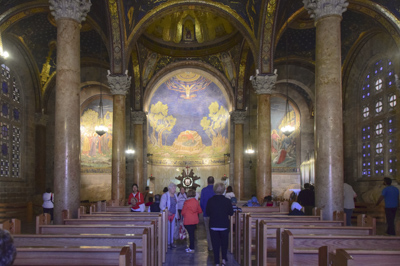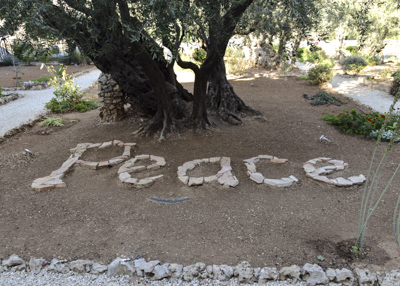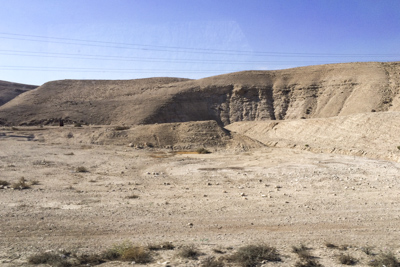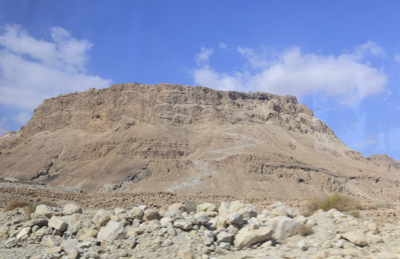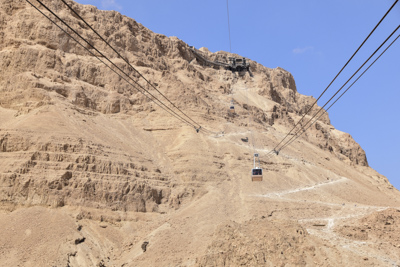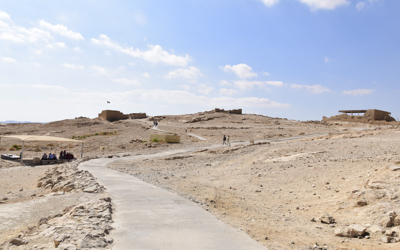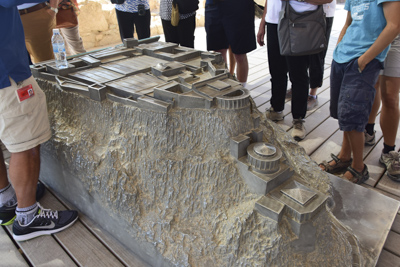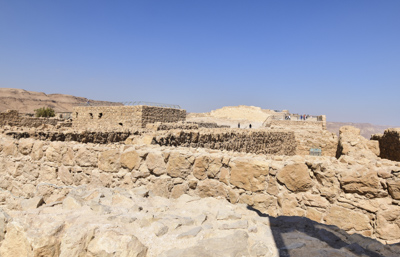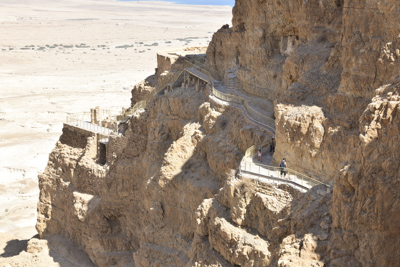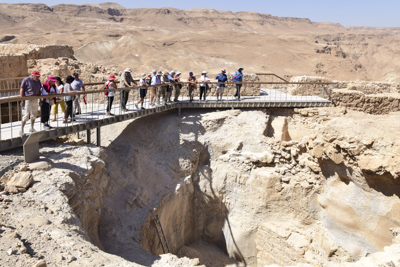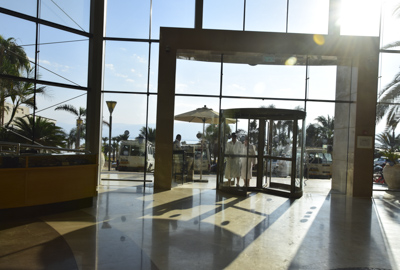Friday, October 13, 2017
We checked out of the Dan Boutique Hotel in Jerusalem and drove a short distance up and down hills to the Mount of Olives. We were on a hill opposite the wall surrounding the Old City and we had a great view across the valley.
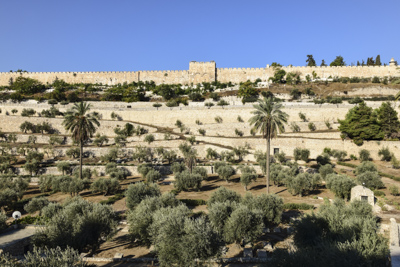
We entered the Garden of Gethsemane and admired the ancient olive trees. Gethsemane means “oil press” in Hebrew. This is one of four locations claiming to be the biblical place where Jesus prayed before the crucifixion. 
The Basilica is also known as the Church of All Nations because it was completed in 1924 with donations from different countries. It was built on the foundations of two earlier churches from the 12th and 4th centuries. The current church is known for its magnificent mosaic on the facade above the pillars.
The interior was awash in soft lavender light from stained glass windows. A large rock in front of the altar is preserved as the place where Jesus prayed. Arrangements of stones under an olive tree in the garden:
We drove out of Jerusalem and it was amazing how quickly the terrain changed from green trees to dry desert.
On our way south along the Jordan Valley, we stopped at a shop called Ahava, to stock up on lotions and other cosmetic products made of minerals from the Dead Sea.
We continued driving south to Masada. This is the ancient fortification located on top of an isolated rock plateau, overlooking the Dead Sea. In my photo below, which I took from the bus, you can see the zigzag walking trail (known as “the Snake Path”) on the side of the mountain.
There’s a cable car system which runs from ground level all the way up to the top providing spectacular views of the surrounding region. We looked down on people walking up on the path.
The view is breathtaking across the Dead Sea and the mountains of Jordan on the other side.
We ascended and walked among the ruins of the hilltop fortress which is a UNESCO World Heritage Site. King Herod the Great built the palace for himself on the mountain and fortified Masada in about 35 BC. The model below shows what historians believe Masada was like during this period.
After the destruction of the Second temple in 70 AD, a group of Jewish rebels, called Sicarii, settled on the mountaintop. Three years later, the Roman legion surrounded Masada. They built a siege ramp against the western side of the plateau. The Romans breached the wall of the fortress to find all the food storerooms set on fire and 960 dead people. They had committed mass suicide or killed each other as a better alternative to being captured and enslaved by the Romans.
The Masada site is huge and it was very helpful to have Rafi describe and interpret the historical ruins. Among the many buildings, there were two palaces, a swimming pool, bath houses, barracks, many storerooms, water cisterns, and residential areas.
We descended via the cable car and had lunch in the cafeteria at the tourist center at the base of Masada. We drove to the Spa Club Dead Sea Hotel for the evening.
This is a resort area for tourists who want to bathe in the extremely salty waters of the Dead Sea. The hotel was located along the beach and there were two pools for guests: one with salt water and the other with fresh water. Many tourists are attracted to the Dead Sea for its health and healing properties.
I thought it was strange to see many people walking around the hotel in bath robes.
